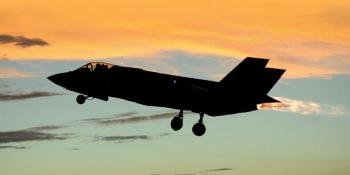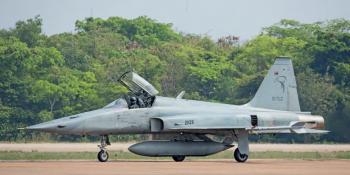COMMERCIAL HEAVIES: BOEING 747-8
How long will the ‘Queen of the Skies’ be around?

There’s no mistaking the Boeing 747, especially not the 747-8, the longest 747 ever produced at 250ft 2in (76.3m) in length, which with the famous humpback fuselage and four large engines creates an imposing sight.
Not an especially common one though. At the time of writing just 133 747-8s had been delivered. Of these, only 47 are the passenger variant, the 747-8 Intercontinental, with the 747-8 Freighter variant accounting for the other 86.
Low 747-8I sales
Most 747-8Is (19 aircraft) are used by Lufthansa, which has used it since May 2012. The only other airline operators are Korean Airlines (ten) and Air China (seven). Eight other 747-8Is are with VIP customers (including three with the Qatar Emiri Flight) and one with an operator that remains officially undisclosed but is widely rumoured to be the Saudi Government.
Boeing has only two remaining 747-8I orders, both for the US Air Force for the VC- 25B conversion to operate as Air Force One, replacing the current VC-25A.
The same underlying reason that led to the A380’s demise as a current-production model explains the low number of 747-8I sales: the increased capability and efficient economics of twin jets making quad-jets far less competitive.
High capacity hauling
The 747-8F entered service in October 2011 with Cargolux. It can transport a payload of 292,400lb (132,630kg) in its 30,288ft3 (857m3) of cargo volume using its 34 main-deck pallet positions and 12 lower-deck positions, with the distinctive upwards-swinging nose door off ering loading flexibility.
At the time of writing, 86 747-8Fs were in service comprising aircraft for AirBridgeCargo (seven), Atlas Air (ten), Cargolux (14), Cathay Pacific (14), Korean Air Cargo (seven), Nippon Cargo Airlines (eight), Silk Way Airlines (five), UPS Airlines (11), Volga-Dnepr Airlines (six) and four 747-8Fs with customers officially listed as unidentified but who include Saudia and Qatar Airways Cargo. A further 21 747-8Fs are in the backlog, including 17 more for UPS.

Boeing introduced several enhancements to the 747-8 after service entry. Tweaks to the airframe reduced operating weight which, in combination with a performance improvement package from General Electric for the GEnx-2B engines, reduced fuel burn by 3.5%. There were also flight management computer upgrades and a 330-minute extended-range operations clearance.
What’s the 747-8F’s future?
Operators AIR International has spoken with in recent years such as Cargolux and UPS have praised the 747-8F’s ability to serve their milk-runs between the main air cargo hubs worldwide, where the aircraft’s high capacity comes in useful.
But the low orders number and declining backlog raises an inevitable question about the 747-8’s sustainability. Granted, the 747-8F serves the high-capacity segment of the air cargo market, so a marginal number of sales is inevitable. But after the last UPS 747-8Fs leave the Everett factory in 2022 and the VC-25Bs are delivered (from 2024),what then?
Boeing still markets the 747-8F, saying its high-volume capability sits alongside the 777 Freighter’s longer range (4,970 nautical miles/9,204km) and that together the 747- 8F and 777F off er complementary options for the top end of the cargo market.
Looking ahead in its latest Commercial Market Outlook (CMO) released in June 2019, however, Boeing envisages reduced demand for the 747-8F. The CMO forecasts a requirement for 1,040 new freighters over the next 20 years, but it adds: “During this time period, the fleet share of large widebody freighters [i.e. 747-8Fs] will decline from 29% to 25%, medium widebody freighter fleet share will increase from 32% to 35% and standard body freighter share will increase from 38% to 40%.”
Moreover, with older 777-300ERs set to leave the market in the early-to-mid 2020s there is clearly a potential feedstock of Triple Sevens ripe for freighter conversion. This raises the prospect of Boeing one day off ering a 777-300ER converted freighter to complement the 777F (which is based on the 777-200LR variant) and reports last year said the concept is under evaluation. If such a conversion is launched in the future, it would be yet another sign of how the big twins are dominating the heavy airliner market at the expense of the quad-jets. AI
Boeing 747-8 Freighter characteristics





